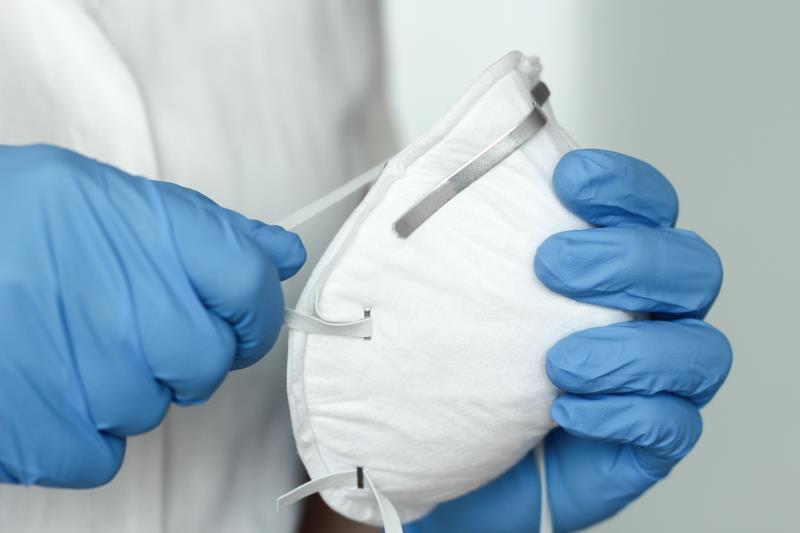
Contaminated N95 respirators can be rid of SARS-CoV-2 virus using vaporized hydrogen peroxide (VHP) or ultraviolet (UV) light and reused for up to three times, according to a NIH study — a finding which comes as a lifeline in the face of global shortages of such PPE.
“However, utmost care should be given to ensure the proper functioning of the N95 respirator after each decontamination using readily available qualitative fit testing tools and to ensure that treatments are carried out for sufficient time to achieve desired risk-reduction,” the researchers cautioned.
The researchers tested four methods for decontaminating the N95 masks: UV radiation (260–285 nm), 70 percent ethanol spray, 70°C dry heat, and VHP. For each method, the rate of SARS-CoV-2 inactivation on the N95 filter fabric was compared to that on stainless steel. [medRxiv 2020;doi:10.1101/2020.04.11.20062018]
Among the four methods, VHP was the quickest in inactivating the virus — requiring about 10 minutes. Ethanol showed similar inactivation rate, while dry heat and UV light required approximately 60 minutes or more, respectively.
In addition to viral inactivation, the masks were also assessed for functionality in terms of filtration performance through quantitative fit testing. After each run of the decontamination methods, the masks were worn for 2 hours to test the integrity of fitting.
After a single decontamination run, there was no significant drop in the filtration performance for any of the four methods of decontamination.
However, the ethanol-treated masks showed a sharp drop in filtration performance after subsequent rounds of decontamination, and hence, the decontamination method is not recommended.
In contrast, the masks treated with VHP or UV light retained their filtration function, comparable to that in the control group, after two rounds of decontamination and reuse. Even after the third run, the masks still maintained acceptable performance for these two decontamination methods.
Meanwhile, masks exposed to dry heat could be used twice before function declined.
“Our findings show that VHP treatment exhibits the best combination of rapid inactivation of SARS-CoV-2 and preservation of N95 respirator integrity,” the researchers stated. “UV radiation kills the virus more slowly and preserves comparable respirator function.”
“All treatments, particularly UV and dry heat, should be conducted for long enough to ensure that a sufficient reduction in virus concentration has been achieved,” they pointed out.
“The degree of required reduction will depend upon the degree of initial virus contamination.”